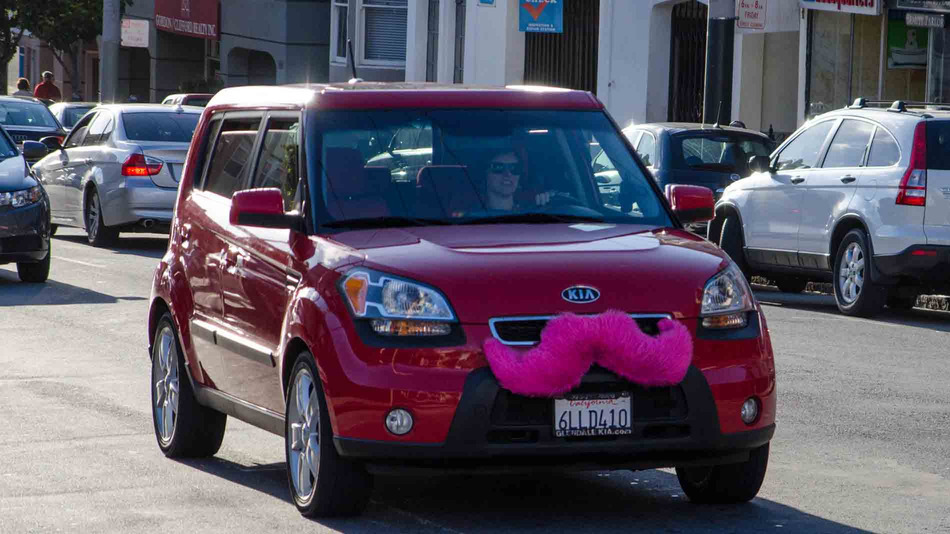A former Lyft driver shares his perspective on Lightfoot’s proposed ride-hail tax
5:25 PM CST on November 21, 2019

Currently Chicago has a total flat $0.72 ride-hail tax. Mayor Lori Lightfoot's proposal for a new fee structure would reduce the tax on shared, non-downtown Uber Pool and Lyft Line trips to $0.65. All other trips would see a $0.53 fee increase to $1.25, except for shared and private downtown trips during peak hours (6 a.m. to 10 p.m.), which would be taxed at $1.25 and $3 respectively. According to a recent city of Chicago study, most trips hailed on the South and West sides are shared, and 90 percent don't go downtown; therefore most of these trips would be cheaper under the plan. The new fees are projected to raise $2 million a year for CTA improvements.
Thanks to the companies' willingness to burn through investors' money -- Uber lost $1 billion last quarter -- ride-hail is artificially affordable for customers. That and the convenience of reliable on-demand pickup make it highly attractive to people who would otherwise use the CTA or other modes.
Since ride-hail launched in Chicago in 2014, the transit system has seen 48 million fewer trips annually, which reduces farebox revenue. The city hopes that by discouraging unnecessary Uber and Lyft trips and encouraging more CTA riderships, the new fees will reduce congestion, improve bus speeds, boost transit ridership, and help prevent the need for service cuts and/or fare increases. -- John Greenfield, editor
Last year, for a few months, I worked as a Lyft driver. I drove all over the Chicago area, including downtown, O’Hare Airport, the South Side, the West Side, my home base of the North Side, and the suburbs. I once drove a guy from O’Hare to Milwaukee because it was cheaper for him than taking another plane. I would drive three or four days during the week, and then weekend nights and Sunday brunch hours. I met my expectations financially for the hours I drove, but it took a lot of planning and strategy to maximize the money I made. After 11 years of working in transportation planning and outreach, I was experiencing something that is dramatically changing the way people are getting around firsthand.
Regulations and reviews were probably the hardest thing about the job. Ride-hail drivers can’t pick up or drop off people on Michigan Avenue or State Street in downtown Chicago, and the regulations around airport pickup and drop off are bonkers and could fill a whole article. Keeping my car spotless and in good shape 100 percent of the time isn’t easy when I’m driving for other work, but driving a bunch of strangers around made it really hard. (If your car is not spotless, forget about getting a good review). I’ve talked with other drivers and know my experience was pretty average overall. Every time there is discussion of regulating Lyft and Uber, I pay attention even more now that I’ve done the work myself.
There’s been some excellent analysis of the new fees proposed by Mayor Lightfoot, and some astute observations about what it would really take to eliminate the congestion that has resulted from the explosion in ride-hail use. Uber and Lyft (particularly Uber) and their proxies have framed the mayor’s proposed fees as something that will negatively impact folks on the South and West sides, but many folks are hoping the new fees will generate revenue for the city and the CTA and reduce congestion, especially downtown. I’ll share my observations as a driver, and hopefully that can help interested folks ask more questions and get to the bottom of what’s actually happening.

My impression is that people who take trips to or from downtown, especially at peak hours, generally don’t care how much the ride costs. These people are spending $20-40 per trip, so my sense is that raising the current $0.72 flat ride-hail tax to $3 for private downtown trips during peak hours (6 a.m. to 10 p.m. on weekdays) won’t make a difference. Again and again, people of all backgrounds would request a pick up and be relieved that I was able to grab them (I had to, my app was on!) People told me that using ride-hail was “cheaper than a cab” and “much faster than transit” (which is debatable, consider downtown traffic jams, but that’s what people said.)
I once picked up a single mom from the South Side who took Lyft because the time savings allowed her to save money on childcare. Why take two buses and a train to get to work when ride-hail can get you there in 15-20 minutes? While I’m well aware that the way this woman used Lyft wasn't typical, it definitely made me think a lot about why my customers were using ride-hail.
On top of regular surge pricing, Lyft implements “Power Zones” for big sporting events, concerts, holidays and weather events. Customers were certainly aware of these fee increases but never hesitated to request ride share. I worked after a Super Bowl and had the best two hours I had the entire time I drove for Lyft. Looking at the proposed fees, I don’t think there’s any way it will deter people from continuing to use ride share to get around.
Many of my customers were women, and often women of color. I don’t feel like I drove long enough to see real patterns (that’s my transportation planning background talking), but a few themes emerged from my conversations with people about why they chose ride-hail. Many people were avoiding transit, especially those traveling long distances. I would often start in Rogers Park, Edgewater, or Uptown and take folks to Englewood, Kenwood, or Hyde Park. On a couple of occasions, I was told that the customer was specifically avoiding a particular train or bus because they didn’t feel safe.
I once took a woman and her daughter from the Howard Red Line to a western suburb because they didn’t feel like the Blue line would be safe by the time they transferred from the Red Line, and on top of it, I was saving them about two hours of travel time. For the single mom and these women, getting to work on time or getting home safely was more important than saving money with a transit system they viewed as inefficient or unsafe. When I hear people making assumptions about why Chicagoans use ride-hail, these are the folks I think about.
I believe that if people want to change how ride-hail is used, fees can only be the first step. Although studies show that most Uber and Lyft trips would otherwise have been done by transit, walking, or biking, people are not going to switch back to the CTA until it sees substantial improvements. A cleaner and safer system, with more frequent service, would have to be in place before people a significant number of people would be willing to forgo ride-hail in favor of transit.
Ride-hail customers believe that Uber and Lyft offer safety, speed, and reliability while Chicago’s public transit system offers none. (Of course, crime happens in ride-hail vehicles as well, and the Blue Line is a faster, more reliable way to get to O'Hare than an Uber stuck in traffic on the Kennedy. - JG)
It’s about funding. CTA workers are awesome and work hard (seriously, do you want to do what they do?), but they are working for a system that’s not funded well enough to provide excellent service to its customers.
Meanwhile ride-hail use continues to grow, and harnessing that success to fund the public good is a smart idea, and these new fees begin to do that. If Uber and Lyft's popularity is a symptom of the CTA's failures, let's learn from that and fix the system.
Charlie Short is the former manager of the city of Chicago's Bicycling Ambassadors. He can now be found fixing guitars and playing music full time. Find him at www.charlieshortmusic.com.
Read More:
Stay in touch
Sign up for our free newsletter
More from Streetsblog Chicago
Johnson appoints one West Side pastor for CTA board, then nominates another West Side pastor to RTA board
Supporters argue that, despite his lack of transit expertise, Ira Acree’s social justice experience and political connections could be an asset for the RTA board.
Today’s Headlines for Thursday, April 26
The de-facto ban on riverwalk biking is back. What should we do about it?
In the short term, new signage is needed to designate legal areas for cycling on the path. In the long term CDOT should build the proposed Wacker Drive protected bike lane.


